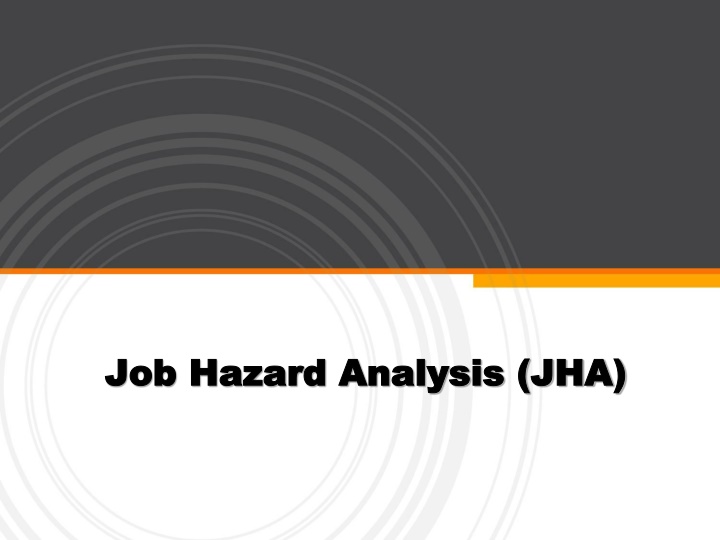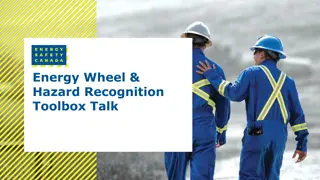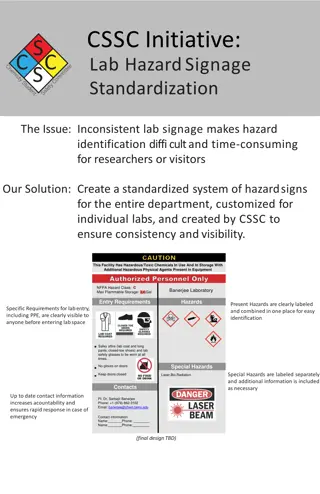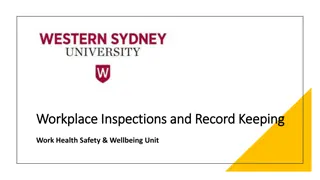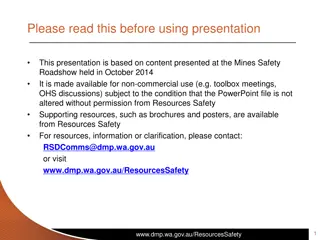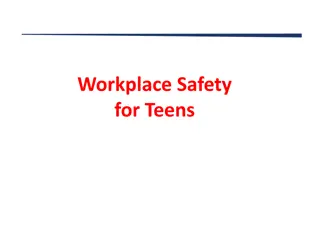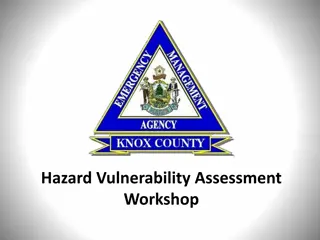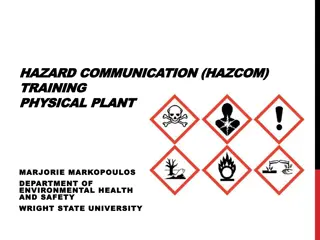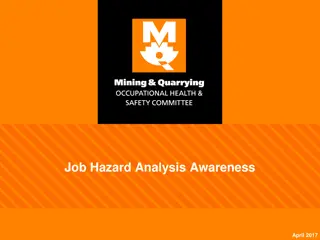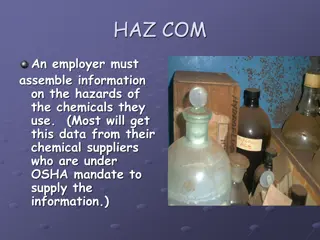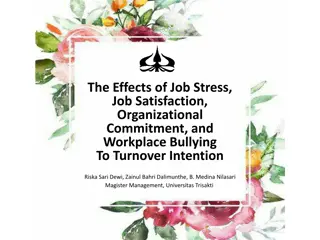Importance of Job Hazard Analysis (JHA) in Workplace Safety
Job Hazard Analysis (JHA) is a crucial technique that focuses on identifying and mitigating hazards in work environments to prevent injuries, illnesses, and property damage. This analysis involves breaking down job tasks, identifying potential hazards, implementing controls, and providing necessary training to personnel. By conducting JHA, organizations can ensure a safer work environment and reduce the risk of workplace injuries.
Download Presentation

Please find below an Image/Link to download the presentation.
The content on the website is provided AS IS for your information and personal use only. It may not be sold, licensed, or shared on other websites without obtaining consent from the author.If you encounter any issues during the download, it is possible that the publisher has removed the file from their server.
You are allowed to download the files provided on this website for personal or commercial use, subject to the condition that they are used lawfully. All files are the property of their respective owners.
The content on the website is provided AS IS for your information and personal use only. It may not be sold, licensed, or shared on other websites without obtaining consent from the author.
E N D
Presentation Transcript
Job Hazard Analysis (JHA) Job Hazard Analysis (JHA)
Job Hazard Analysis (JHA) What is it? Why do I have to do it? Page 2
JHA (or JSA) Defined A Job Hazard Analysis is a technique that focuses on job tasks as a way to identify hazards before they result in injury, illness, property damage, or worse It focuses on the relationship between the worker, the task, the tools, and the work environment After identifying uncontrolled hazards, steps are taken to eliminate or reduce them to an acceptable risk level Reference: OSHA 3071 Guidebook Page 3
Workplace injuries Majority of disabling workplace injuries happen to workers who are in their first year with a new employer Little or no safety training Unsafe work procedures Inadequate Personal Protective Equipment (PPE) No safety oversight Page 4
Why do we all have to do this? Each lab and each project has unique hazards One-time training is insufficient: better to drill important concepts Human beings are unreliable operators, and training is the least reliable way of preventing injuries unless it is thorough Page 5
Steps to follow: Assemble group of people knowledgeable in tasks involved in a lab or research project Break down jobs involved in a lab or project into steps, and identify potential hazards in each step Identify controls for each hazard Train all involved personnel and students Document the hazards, safe procedures, and training sessions in writing Page 6
People who will do JHA Course Coordinator and Lab Coordinator for teaching labs. Input from instructors, TA s, students. Team advisor and student captains for team projects. Principle Investigator(s) for research projects. Input from student researchers. All of the above should use expertise of COE techs and safety personnel as needed. Page 7
Breaking down the job Not too many steps, not too few steps Get out of your normal mode of thinking and imagine things that can go wrong Of the things that can go wrong, prioritize the ones that are: Most Likely Most dangerous Page 8
A few common hazards Chemical (toxic, flammable, corrosive, explosive) Unexpected release of stored mechanical energy (springs, compressed gasses, dropped weights) Electrical hazards (shock/electrocution, fire, electrostatic discharge) Mechanical (blades, crushing, rotating machinery, abrasion) Radiation (lasers, radioactive materials) Biohazard (toxins, infectious agents, carcinogens) Ergonomic (lifting heavy weights, repetitive motion, eye strain) Page 9
Training Train instructors and TA s thoroughly Train students before they do anything in the lab Consider giving students a safety test as part of the grade for teaching labs, and as a qualifying litmus test for participation in a project Page 10
Controls From most effective to least effective: Remove the danger altogether if not critical to class/project Guard the danger Provide personal protective equipment Provide instructions, training, warnings Page 11
Documentation Document hazards and safe operating procedures on standard form Keep this list on file Provide this list to all students/instructors involved with lab or project before they start work Keep a signup sheet with names, dates, and signatures, verifying that training occurred Page 12
Examples ME 220L Safety Form Ethanol Distillation Safety Form Blank Safety Form: Learn by doing! Page 13
